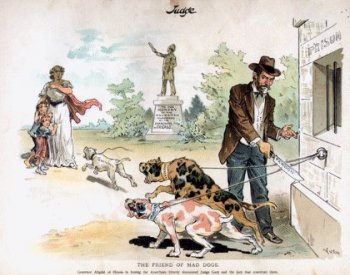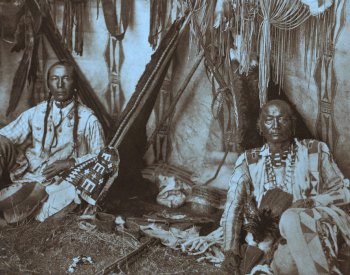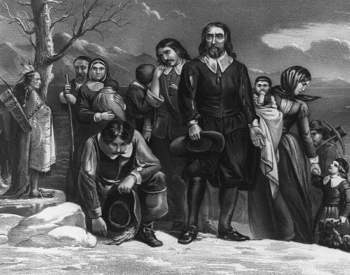To answer this question correctly, students must select Facts 2 and 3 and explain how each might provide context to help explain why the authors wrote the play in 1936. Fact 2 might be relevant because it reveals the political motivations of the authors. In an attempt to persuade others to oppose lynching, the authors may have used John Brown as an allegorical figure from the past. Fact 3 provides valuable context about the political environment in which the play was written. Concerns over racist policies in Germany may have motivated the authors to write a play as a commentary on racism.
Level: Proficient
Student selects a correct fact and explains how it might help explain the authors’ motivations for writing the play in 1936.
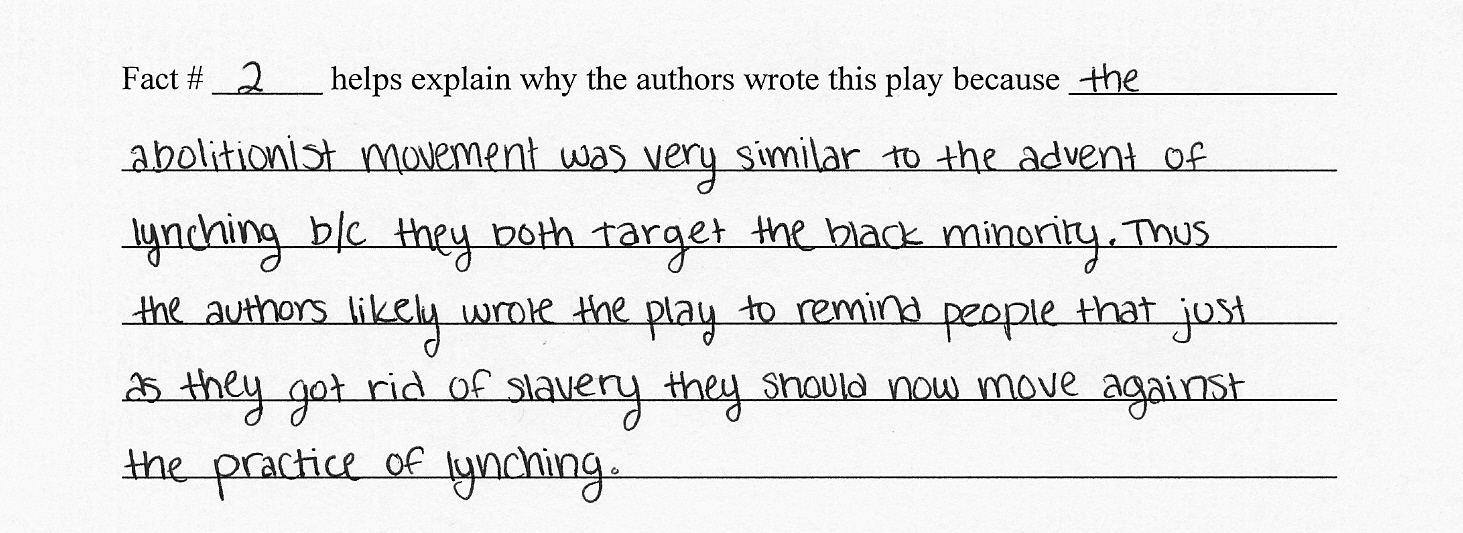
This student identifies the possible connection between slavery and lynching.
The student goes on to offer a plausible explanation of the authors' motivation for writing the play.

The student provides a reasonable explanation of the authors' motivation but does not make too strong a claim. Instead, he says the authors were "probably" opposed to Nazi policies.
Level: Emergent
Student selects a correct fact but provides an incomplete explanation of how the fact might help explain the authors' motivations.

This students is definitely on the right track, but she has not provided a complete explanation of her thinking.
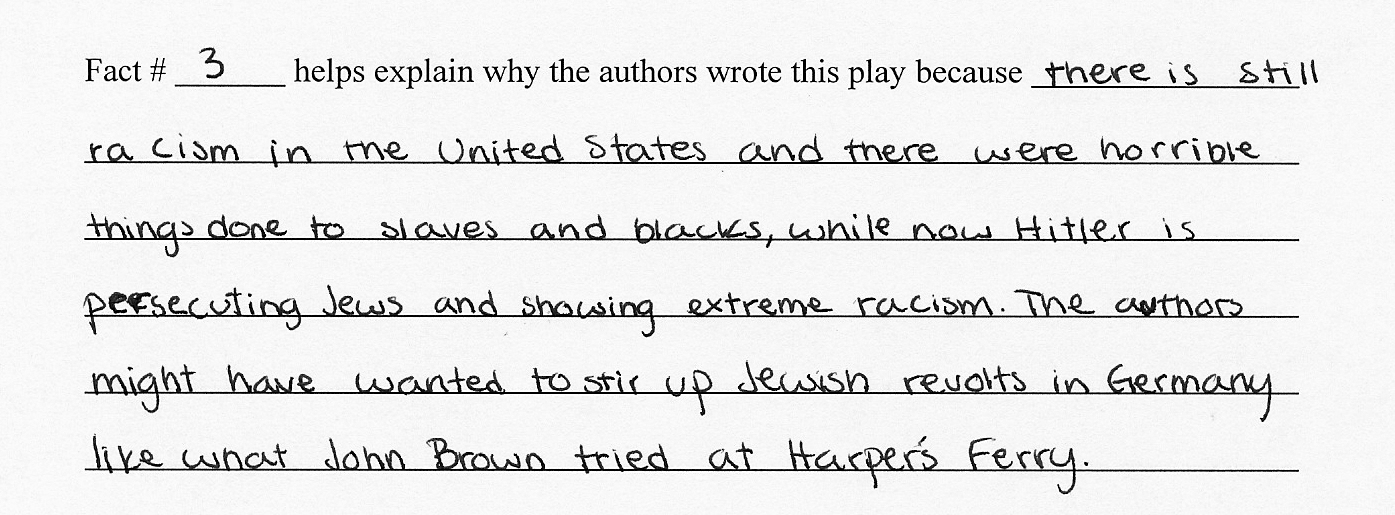
Although a logical connection is made to Nazi policies, this student misunderstands the intended audience of this play. It is very unlikely that German Jews would have an opportunity to see this Broadway production.
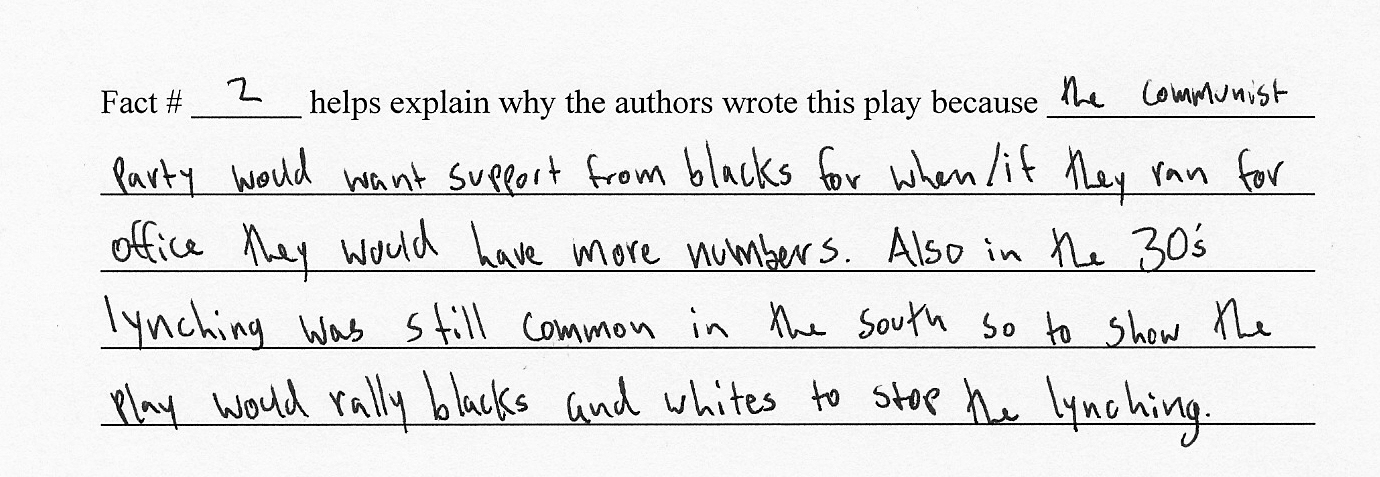
This student makes a plausible claim about rallying support to end lynching, but the suggestion that a main purpose of the play was to build political support for the Communist Party is misguided. This document provides no evidence that the play was espousing Communist Party doctrine or was publicly linked to the Communist Party.
Level: Basic
Student selects an irrelevant fact or selects a correct fact but does not provide a reasonable explanation for why it might help explain the authors’ motivations.

Despite answering 1936 for Question 1, this student assumes that slavery still existed at the time when the play was staged.
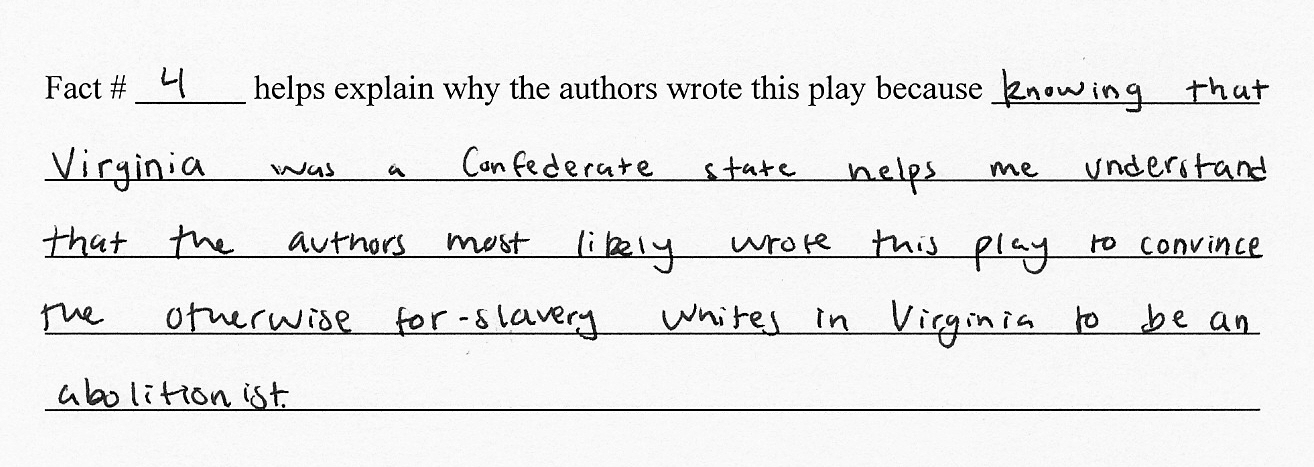
This student has ignored the date and is operating under the assumption that slavery existed at the time the play was produced. This is a very common student error.

Like the two previous responses, this student correctly answered 1936 for Question 1. Unfortunately, the student has not taken this into consideration when answering the question. The student mistakenly believes that slavery still existed when Gold was writing the play.

